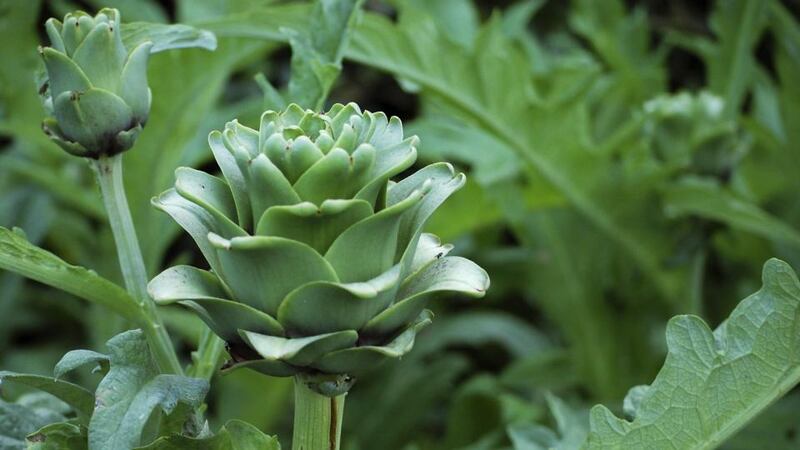A recent conversation with a friend inspired this week’s column. Determined that her tiny plot will be both productive and beautiful, she’s experimenting by foregoing many of the more traditional, space- hogging vegetables in favour of edible flowers. In this way, she hopes that her city garden will provide her with treats that are both visual and edible, while also providing food for visiting pollinating insects and increasing biodiversity within the garden.
All this aside, there’s another good reason why more of us should dedicate some space in our gardens to edible flowers, which is that many of them are also nutritionally good for us, their brightly coloured blossoms rich in vitamins and minerals.
An obvious example is the pot marigold, Calendula officinalis , an easy-to grow annual with multi-petalled, disc- shaped flowers that come in shades of fiery orange, adding vivid colour both to the garden and the salad bowl.The many cleansing, detoxifying qualities of this plant also make it a favourite with traditional herbalists. In particular, look out for the variety Neon, whose dark-orange petals are tipped with bronze (See sarahraven. com).

Another stalwart of the edible flower garden is the quick-growing and sweetly scented nasturtium ( Tropaeolum sp. ), whose flowers come in a range of jewel-like colours and are exceptionally rich in vitamin C, as are its edible seed pods and leaves. All parts of the plant have a peppery flavour reminiscent of watercress.
Like the marigold, the nasturtium also has a long history of use in herbal medicine. It was traditionally used as a remedy for scurvy, while it is also well known for its antibiotic qualities.
Where space is limited, concentrate on dwarf varieties of this colourful annual, which look great used as edging along a bed or path. Recommended varieties include Empress of India (a Victorian compact variety with velvety, crimson flowers and handsome foliage), and N. Alaska (semi-trailing with variegated leaves, available from seedaholic.com). And of course, what edible flower garden would be complete without borage? The blue or white star- shaped flowers of this tall annual appear throughout the summer months, taste faintly of cucumber and can be used as a decorative garnish in salads, puddings and cakes. The blue-flowering species can also be used to colour vinegar.
All of the above annuals (sow the seed now) are well known for their pretty, edible flowers but there are many other plants – not just annuals, but also perennials and shrubs – that could earn a place in any edible flower garden.
Easy-to-grow daylilies (species of Hemerocallis ), for example, with their trumpet-shaped, nectar-rich sweet blooms, will add a satisfyingly juicy crunch to any salad bowl. In particular, look out for the species H. fulva , varieties of which include the double orange, Kwanso and Flore-Pleno , both especially prized for their large, tasty flowers. The fragrant blossoms of elderflowers can be eaten raw, used to add flavour to jellies or to make a delicious cordial or sparkling wine.
Roses, too, have beautiful, edible petals that lend a delicate flavour to ice cream and other puddings. Also consider hollyhocks, sunflowers, tuberous begonias, dahlias, Sweet William, lavender, anise hyssop, garden pinks, the lilac-flowered Tulbaghia violacea and even the spiky Yucca gloriosa , whose white flowers are delicious eaten raw, while the flowering stem can be cooked and eaten like asparagus.
No one knows this better than veteran gardener and writer Joy Larkcom, whose wonderful book Creative Vegetable Gardening , a classic first published in 1997, has done so much to popularise the use of flowers in kitchen gardens and allotments.
Inexplicably out of print for a number of years, it is finally being reissued by publishers Mitchell Beazley next month. Larkcom, who is based west Cork, herself admits to being “guilty of favouritism where edible flowers are concerned. Mostly, they have to be dual purpose. So ordinary purple chives and the white flowered Chinese chives head the list: they have real oniony and garlic flavours and make lovely edges. So does the little Tagetes marigold, especially Orange Gem and Lemon Gem. The dainty flowers have a sweet, fruity flavour, are colourful in salads and help deter greenfly if grown indoors.”
Read her book and you will want to grow scarlet runner beans up giant sunflowers, to plant flame-coloured nasturtiums and vibrant day-lilies next to feathery bronze fennel, to allow lofty leeks to go to flower just to enjoy their drumstick flowers. You'll also never look at a traditional flower garden in quite the same way again.
Creative Vegetable Gardening
, by Joy Larkcom, will be published by Mitchell Beazley
next month, £18.99
NOTE: As with any edible plant, make sure that you have identified any flower correctly before eating it and, bearing in mind that any edible plant has the potential to cause an allergic reaction, eat only small quantities initially.











